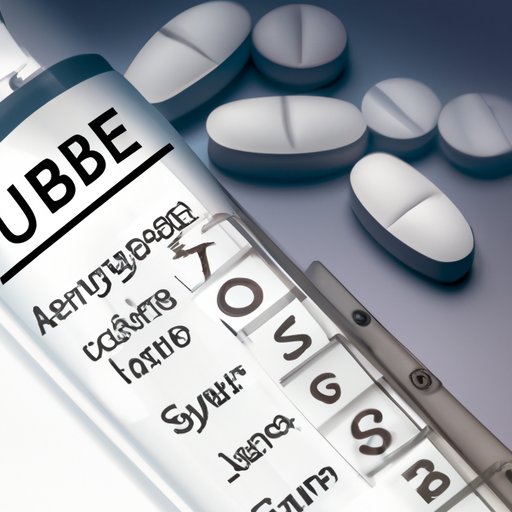
I. Introduction
If you or someone you love is struggling with opioid addiction, seeking treatment through medication-assisted therapies such as Suboxone can be a life-saving decision. But what is Suboxone, and how does it make you feel? In this article, we will explore the personal experiences of those who have taken Suboxone, compare it to other opioids, discuss the science behind its effects, and prepare readers for potential side effects and proper dosage and timing.
II. The Personal Experience
Many individuals who take Suboxone describe their first usage as a life-changing experience. For some, the physical and psychological effects of opioid addiction can be so overwhelming that it feels almost impossible to manage on their own. Suboxone can provide a sense of relief from cravings and withdrawal symptoms, which can help users regain their focus and energy.
Users have reported feeling more stable, less anxious, and more motivated after taking Suboxone. They have also noticed an increased ability to enjoy life and take pleasure in things like hobbies and relationships. These positive changes to mood, energy levels, and overall well-being can be crucial for those on the path to recovery.
While experiences vary from person to person, many Suboxone users note that it allows them to regain control of their lives in ways that they never thought were possible before.
III. Comparison with Other Opioids
Suboxone is unique from other opioids in that it contains two active ingredients: buprenorphine and naloxone. Buprenorphine is a partial agonist to the same receptors that other opioids bind to, but it does not produce the same euphoric high as opioids like heroin or oxycodone. Naloxone is added to prevent misuse by causing severe withdrawal symptoms if someone tries to inject or snort the drug.
Experts have praised Suboxone’s ability to help users manage cravings and withdrawal symptoms, making it an effective medication-assisted therapy for opioid addiction treatment.
However, it’s essential to note that Suboxone is still an opioid and can still produce some of the same side effects and risks of other opioids. It’s crucial to work closely with a doctor and follow proper dosage and monitoring to ensure that Suboxone is used safely and effectively.
IV. The Science Behind the Drug’s Effects
In addition to providing relief from cravings and withdrawal symptoms, Suboxone works by blocking the brain’s “reward” centers that make opioids feel good. Over time, this can help retrain the brain to respond more positively to things like positive relationships, exercise, and other healthy habits.
Suboxone also has a unique chemical structure that allows it to bind to receptors more weakly than other opioids, reducing the potential for misuse and overdose.
While the science behind Suboxone’s effects may be complex, it is important for those seeking treatment to have a basic understanding of how the medication works.
V. Potential Side Effects
Like any medication, Suboxone comes with potential side effects. These can include nausea, vomiting, constipation, headaches, and dry mouth. More severe side effects can include respiratory depression, which can cause breathing difficulties. It’s crucial to work with a healthcare provider to monitor potential side effects and adjust dosage as necessary.
It’s also important to note that stopping Suboxone suddenly can result in withdrawal symptoms. Again, it’s critical to speak with a healthcare provider to manage dosage and slowly decrease usage over time.
VI. Dosage and Timing
Proper dosage and timing can significantly impact Suboxone’s effectiveness and make users feel better. Working closely with a healthcare provider to find the appropriate dosage can help manage side effects and maximize the drug’s benefits.
In general, Suboxone is taken once a day, with individual doses typically ranging from 2-16mg. Starting dosages are usually lower and increase over time as necessary. It’s important not to adjust dosage without consulting with a healthcare provider.
VII. Conclusion
To sum up, Suboxone can be an effective medication-assisted therapy for opioid addiction treatment, providing relief from cravings and withdrawal symptoms and promoting a more stable and enjoyable quality of life. It’s important to work closely with a healthcare provider to manage selection, dosing, and side effects to ensure the medication’s safe and efficient use.
If you think Suboxone may be right for you or someone you love, speak with a healthcare provider today to learn more.




